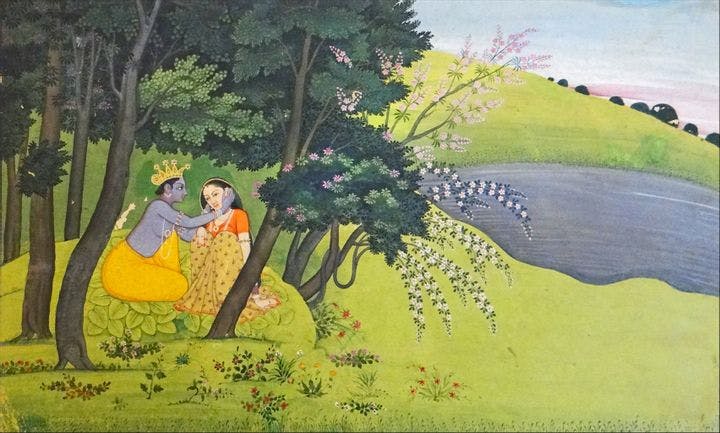Fall 2011
India's Sensual Past — and Puritan Present
– The Wilson Quarterly
India has a rich tradition of eroticism, and an equally old tradition of what Doniger calls “Hindu Puritanism.”
Attacks on stores and restaurants that celebrate Valentine’s Day. Protests against artists and writers who link Hindu gods with sexuality. The arrest of couples who put their arms around each in public. These incidents in India today aren’t isolated, argues the Indologist Wendy Doniger of the University of Chicago. Throughout much of the country, Hindu fundamentalists are engaged in “pervasive and often violent moral policing.” Many of them blame the West for tainting India with lasciviousness, but they’re pointing a finger in the wrong direction, Doniger writes.
India has a rich tradition of eroticism, and a tradition, just as old, of what Doniger calls “Hindu Puritanism.” The Rig Veda, India’s earliest Hindu sacred text, written around 1500 BC, “revels in the language of both pleasure and fertility.” Various other texts, including the Upanishads and the Tantras, which appeared in subsequent centuries, refer to ritual sex. But sexual acts coexisted with the path of meditation and asceticism—some interpreted the acts as intended to occur only on a symbolic level—and so a kind of religious doublethink arose that fostered tolerance.
The more secular Kamasutra, a book that today is referred to much more often than it is read, appeared in the third century AD. Some of the views that the author, Vatsyayana, expressed about women and homosexuality are liberal even by today’s standards in India. Yet “the Kamasutra plays almost no role at all in the sexual consciousness of contemporary Indians,” in part because it is largely known through the ham-handed translation by Sir Richard Francis Burton (and various others who generally aren’t credited) published in 1883. In any case, Burton and other Britons who celebrated India’s erotic traditions were outnumbered by Protestant British colonizers and missionaries who were put off by Hinduism’s “amatory excesses,” exemplified by gods such as Krishna—“all those arms, all those heads, all those wives.”
Many elite Hindus admired the British colonizers and adopted their views of Hinduism. “The fraction of Hinduism that appealed to Protestant, evangelical tastes at all was firmly grounded in . . . the philosophical, renunciant path,” Doniger writes. Rammohan Roy (1772–1833), one of several religious leaders who toned down Hinduism’s sexy side, developed a strain of religion that combined monistic Hindu beliefs with elements of Islam, Unitarianism, and even the ideas of the Freemasons.
Nineteenth- and 20th-century liberal Indian intellectuals tended to explain the shift from appreciation of to embarrassment about Hinduism’s erotic past by blaming marauding Mughals and British Victorians. While there are elements of truth in these generalizations, they ignore the Mughals and the Britons who celebrated the Hindu erotic arts, while downplaying India’s own history of “Hindu antieroticism.”
What India has picked up from the West is the bad habit of censorship. The erotic and the ascetic have a long history of coexistence in India that is endangered today, but the ancient “erotic path” won’t be easily eradicated, Doniger suggests, in a country where two-thirds of young adults say they would have casual sex before an arranged marriage.
THE SOURCE: “From Kama to Karma: The Resurgence of Puritanism in Contemporary India” by Wendy Doniger, in Social Research, Spring 2011.
Photo courtesy of Flickr/Jean-Pierre Dalbéra
